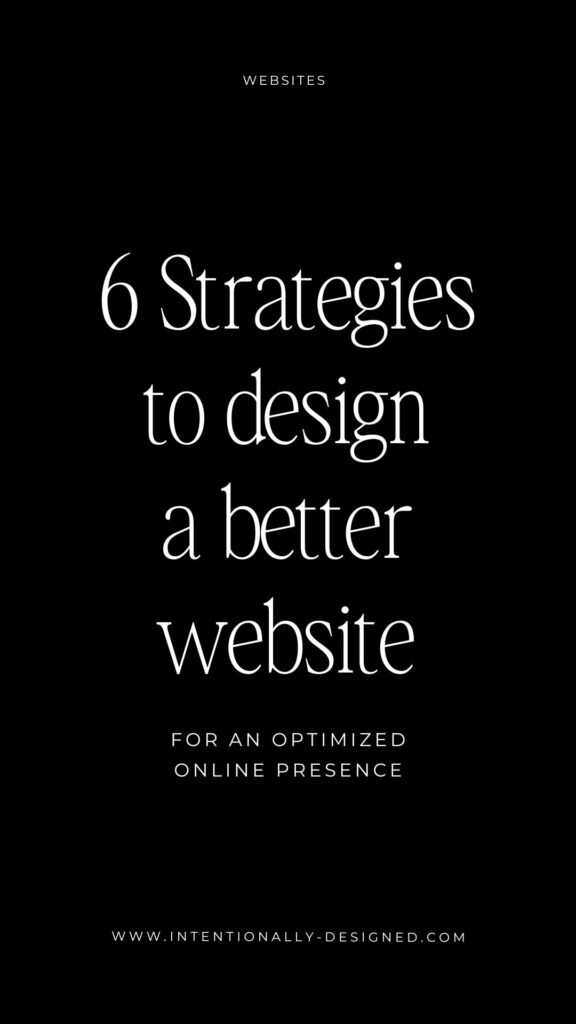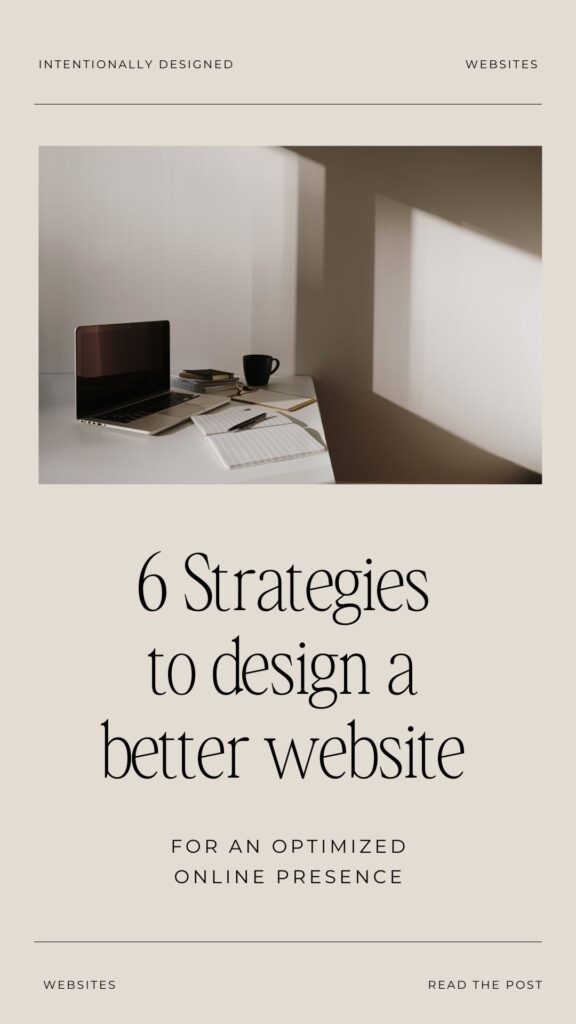Building a strategic website is essential to establish a strong online presence and achieve your goals effectively. But how do you design a better website? Designing a better website involves implementing strategies that enhance user experience, engagement, and overall effectiveness. Here are six strategies to consider:
User-Centered Design
Prioritize the needs and preferences of your target audience when designing your website. Conduct user research to gain insights into their behaviors, preferences, and pain points, and use this information to inform your design decisions. Focus on creating a user-friendly interface with intuitive navigation, clear calls-to-action, and easy access to relevant information.
Mobile Optimization
With the increasing use of mobile devices, it’s essential to optimize your website for mobile responsiveness. Ensure that your site is fully functional and visually appealing on all devices and screen sizes. Adopt a responsive design approach that automatically adjusts the layout and content to provide a seamless experience across desktops, tablets, and smartphones.
Clear Navigation
Streamline your website’s navigation to make it easy for visitors to find the information they’re looking for quickly and intuitively. Use clear menu structures, logical page hierarchies, and descriptive labels to guide users through your site. Implement breadcrumbs, search functionality, and internal linking to enhance navigation and help users discover relevant content.
Visual Hierarchy
Use visual hierarchy principles to prioritize and organize content on your website effectively. Highlight key information and calls-to-action using techniques such as contrast, color, size, and spacing. Guide users’ attention towards important elements and ensure that the most critical content is prominently displayed to improve readability and engagement.
Compelling Content
Create high-quality, relevant content that resonates with your target audience and aligns with your brand messaging. Use engaging copy, captivating images, and multimedia elements to convey your message effectively and keep visitors interested. Incorporate storytelling techniques, testimonials, and case studies to build trust and credibility with your audience.
Continuous Optimization
Regularly monitor and analyze website performance using analytics tools to identify areas for improvement. A/B test different design elements, layout variations, and content strategies to optimize conversion rates and user engagement. Stay updated on industry trends and user preferences to ensure that your website remains relevant and effective over time.
Recap
A strategic approach to website development involves careful planning, thoughtful consideration of user needs, and alignment with business objectives. By implementing these strategies, you can design a better website that delivers an exceptional user experience, drives engagement, and achieves your business goals.
More Resources
- 5 quick tips for updating your website
- How to know if your website is actually working
- How to create a better user experience on your website
- Showit Website Templates
Save for later
Enjoy this article and find it helpful? Pin this image on Pinterest so you’ll always have this info on hand!








